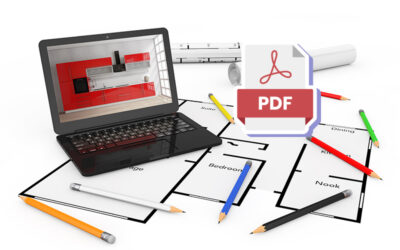
The way people read books has changed over the years. Earlier, books, magazines, journals etc. were published only as printed books. However, today with advanced technologies books can be read digitally and this has led to the popularity of eBooks. eBooks are portable and easily accessible compared to printed books that are hardbound and heavy. Moreover, people no longer have to go to the book store to get books, they can access any book at the click of a button. Largely because of the great convenience offered, many people now prefer reading eBooks than printed books. This has led to largescale eBook conversion with the help of data conversion services.
eBook is an ideal option if you want to convey any message that is straightforward and in a precise format. It also allows you to break down the information into smaller parts. This helps readers to quickly understand the content. Let us consider some effective tips for writing an eBook.
- Don’t go for monetary benefits alone: Some topics like dieting or self-help are very popular, have huge possibilities and help to earn money. Don’t choose such topics if you don’t have much knowledge about them. Pick a topic that you are well aware about. This will help you save time on research and provide the right information to the readers.
- Get topic ideas from blogs and magazines: If you are unable to pick a topic, then refer to the blogs, newsletters and magazines that you read. If you already have a topic ready, then also reading blogs and magazines will help gather more information about the topic. Make sure to pick a topic that your audience likes to read.
- Set some time for research: Once you are ready with your topic, the next step is to research the topic. Consider reading topic related books and eBooks also. In this way, you can collect more valuable information that will be useful for readers.
- Be sure of the facts and statistics: If your topic requires any latest statistics or figures, make sure to double check and verify the numbers before including them in your eBook. Remember, do not make up figures or facts because this can mislead the readers and create a bad impression.
- Write an outline of the book: Once you have gathered enough information, then start writing a chapter outline that adds value to your main topic. Think of each chapter as a heading and under each heading, write information that is focused and supports the overall topic. This will help your eBook to have a clean structure and look organized.
- Write one chapter at a time: Do not rush into all chapters at once. Divide your eBook into individual chapters and work on each. This will help you to break up your work. Make sure to keep the flow of the topic. Keep your audience in mind while writing your eBook. Include data and graphics to support your ideas. Adding a concise Call to Action at the end of each chapter is an excellent way to wind up a chapter. The CTA can be an invitation to join your email list or newsletter.
- Give importance to the introduction and conclusion: Write your introduction and conclusion carefully. Write these after finishing the main body of your eBook. The introduction and conclusion are a gist of the entire eBook. So, these should be tailored in such a way that readers are convinced or persuaded to read your eBook.
- Proofread and edit: Never edit as you write, this can delay the writing of your eBook. Consider editing and proofreading once you are done with your eBook. Consider the following steps to make your editing and proofreading process easier:
- Structure: Check the order of chapters, headlines, subheadings and the main points of each chapter.
- Flow: Check the structure of each sentence, grammar, spellings and paragraphs. There should be continuous flow between each paragraph and each chapter.
- Proofread: Proofread the entire eBook to correct mistakes, slipped tracks, punctuation, sentence fragmentations etc.
Remember to keep a copy of the original draft. Sometimes you may delete some paragraphs and later realize you want to include those. So, keeping a copy will help add the paragraphs if required.
- Design and format properly: Once your content is ready, the next step is to design the eBook. Below are some tips to design your eBook.
- Having enough white space is important for an eBook to look presentable. Give wide margins for your pages, use large font size, and leave enough space between lines and paragraphs.
- Include header and footer along with page numbers.
- Create a table of contents, copyright page and “About the Author” with precise call to action.
- Include pictures and graphics in your eBook to make it more interesting and attractive.
Choose the design wisely so that readers will feel like downloading the eBook. Selecting the right cover size with interesting design would make the eBook look more appealing.
- Publish: If you are planning to sell your eBook on your website, then you have to dedicate a page for sales with payment processing for your readers. There are several tools available for publishing your eBooks today.
Creating an eBook requires effort and time. Today, many books are converted into eBooks and it is easy to convert your paperback edition into eBook through ePub conversion. Data conversion companies provide eBook conversion solutions that are efficient and quick. eBook publishing is much cheaper than publishing printed books. Moreover, a large number of people now prefer eBooks to printed books and therefore authors no longer have to rely exclusively on publishing companies.



